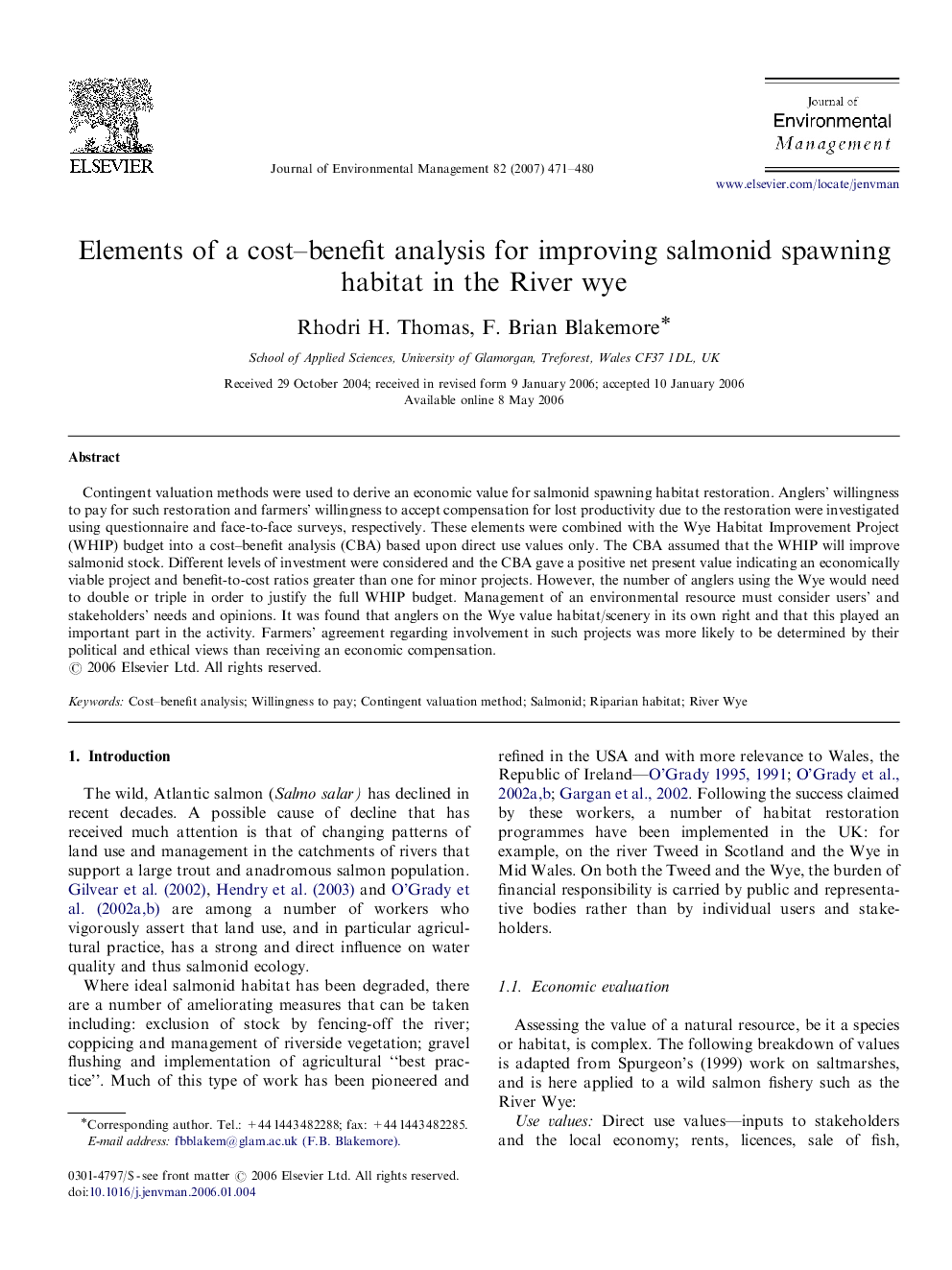| کد مقاله | کد نشریه | سال انتشار | مقاله انگلیسی | نسخه تمام متن |
|---|---|---|---|---|
| 1058909 | 947155 | 2007 | 10 صفحه PDF | دانلود رایگان |

Contingent valuation methods were used to derive an economic value for salmonid spawning habitat restoration. Anglers’ willingness to pay for such restoration and farmers’ willingness to accept compensation for lost productivity due to the restoration were investigated using questionnaire and face-to-face surveys, respectively. These elements were combined with the Wye Habitat Improvement Project (WHIP) budget into a cost–benefit analysis (CBA) based upon direct use values only. The CBA assumed that the WHIP will improve salmonid stock. Different levels of investment were considered and the CBA gave a positive net present value indicating an economically viable project and benefit-to-cost ratios greater than one for minor projects. However, the number of anglers using the Wye would need to double or triple in order to justify the full WHIP budget. Management of an environmental resource must consider users’ and stakeholders’ needs and opinions. It was found that anglers on the Wye value habitat/scenery in its own right and that this played an important part in the activity. Farmers’ agreement regarding involvement in such projects was more likely to be determined by their political and ethical views than receiving an economic compensation.
Journal: Journal of Environmental Management - Volume 82, Issue 4, March 2007, Pages 471–480